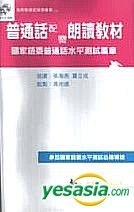

The World Alzheimer's Report of 2018 reported that 50 million people worldwide were living with dementia in 2018, and this number is expected to more than triple to 152 million by 2050. Extracellular A β deposition forms senile plaques, and intracellular hyperphosphorylated tau produces neurofibrillary tangles (NFTs) these are the two hallmark histopathological lesions of AD. In conclusion, our results indicated that HPTQ improved cognition and ameliorated neuronal damage in AD models and implicated a reduction in tau phosphorylation caused by inhibition of the CaM-CaMKIV pathway as a possible mechanism.Īlzheimer's disease (AD) is an age-related neurodegenerative disease that is characterized by cognitive deficits, memory loss, language impairments, and mental and behavioral alterations. We also demonstrated that HPTQ significantly decreased the mRNA levels of CaM, CaMKK, CaMKIV, and tau and significantly decreased the protein expressions of CaM, CaMKK, p-CaMKIV, and p-tau. Furthermore, in vitro results showed that HPTQ significantly increased cell viability in the AD cell model. In vivo, we revealed that HPTQ significantly improved learning and memory deficits and attenuated neuronal damage in the AD rat model. Additionally, mRNA levels of CaM, CaMKK, CaMKIV, and tau were examined using qRT-PCR, and protein expression of CaM, CaMKK, p-CaMKIV, and p-tau were examined using western blot. For the in vitro experiments, rat primary hippocampal neurons were cultured and cell viability was examined by 3-(4,5-dimethylthiazol-2-yl)-2,5-diphenyltetrazolium bromide. Transmission electron microscopy and immunofluorescence methods were then used to investigate neuronal damage.

For the in vivo study, after HPTQ intervention, the Morris water maze test was used to examine learning and memory in rats. In the present study, we used AD models in vivo and in vitro, to investigate both the neuroprotective effect of HPTQ water extracts (HPTQ-W) and the potential mechanisms of this action. However, the neuroprotective mechanisms of HPTQ in AD have not yet been investigated. Huang-Pu-Tong-Qiao (HPTQ), a formula from traditional Chinese medicine, has been used in the clinical treatment of AD for many years, with remarkable effects. It is a chronic, lethal disease in which brain function is severely impaired and neuronal damage is irreversible. Alzheimer's disease (AD) is a complex neurodegenerative disease.


 0 kommentar(er)
0 kommentar(er)
